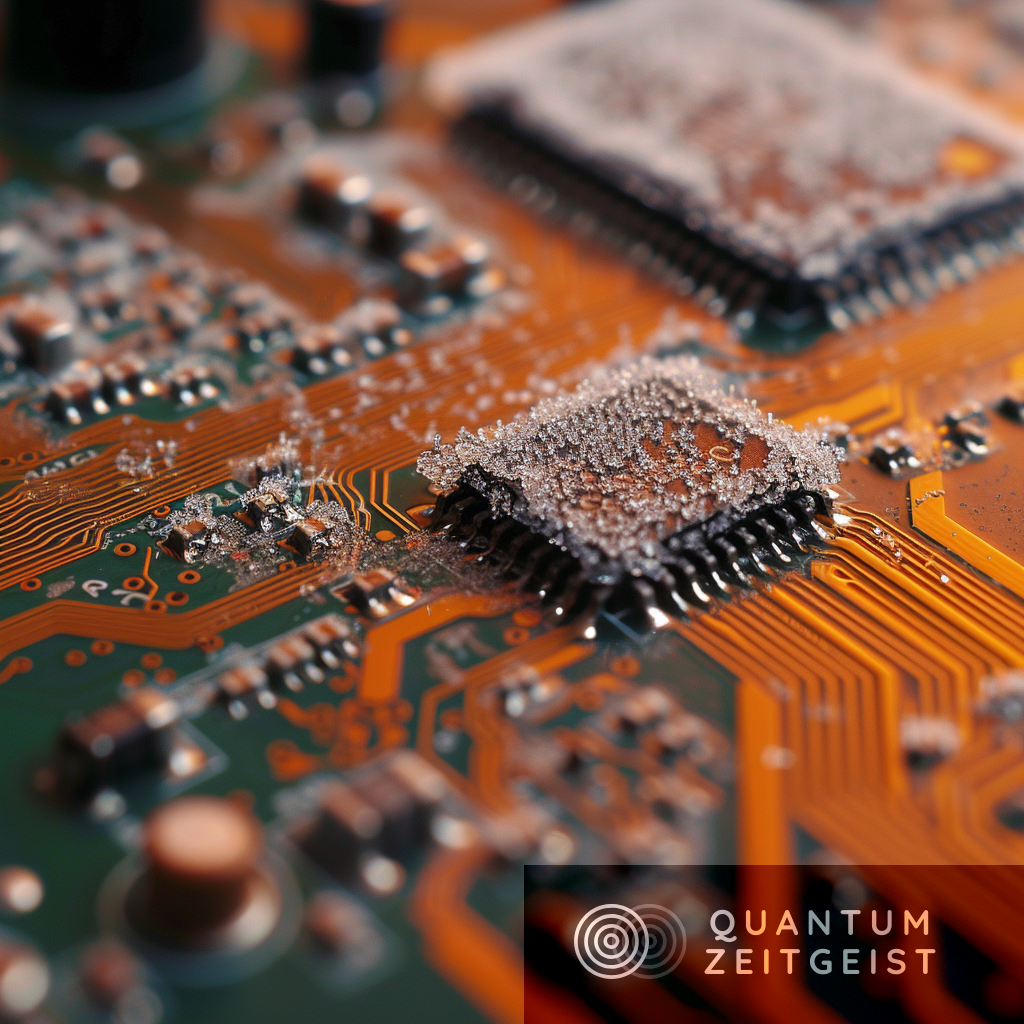Researchers from QCD Labs, QTF Centre of Excellence, Department of Applied Physics, Aalto University, and VTT Technical Research Centre of Finland Ltd, QTF Center of Excellence, have successfully used a single-junction quantum circuit refrigerator (QCR) to rapidly remove excitations from a transmon qubit, a key requirement for quantum computers. The team combined microwave driving and QCR to enhance the removal process, resulting in a 20-fold enhancement in short-time excitation decay. This research could lead to optimized reset of quantum-electric devices and improved superconducting quantum devices.
Introduction to Quantum Circuit Refrigeration
A team of researchers from QCD Labs, QTF Centre of Excellence, Department of Applied Physics, Aalto University, and VTT Technical Research Centre of Finland Ltd, QTF Center of Excellence, have demonstrated the use of a single-junction quantum circuit refrigerator (QCR) for the rapid removal of several excitations from a transmon qubit. This is a critical requirement for the successful operation of quantum computers. The QCR is indirectly coupled to the transmon through a resonator in the dispersive regime, creating a carefully engineered environmental spectrum for the transmon.
The Importance of Fast and Accurate Initialization
The increasing complexity of quantum processors and the emergence of quantum error correction highlight the need for fast and accurate initialization of the device to a known eigenstate. Passive relaxation toward thermal equilibrium is notably inefficient for reset, especially given the demand for increasing qubit lifetimes in advanced operations. Parameter tunability plays an essential role in reset strategies to evade the initialization errors arising from unwanted excitation to higher eigenstates and the feedback imposed by measurement-based protocols.
Combining Microwave Driving and Quantum Circuit Refrigeration
In this study, the researchers combined microwave driving and QCR to enhance the removal of excitations from a transmon qubit. Microwave driving allows for excitation transfer from the transmon to a dispersively coupled resonator in a cavity-assisted Raman process. The QCR, coupled with the resonator, promotes an overall increase in decay rates through photon-assisted quasiparticle tunneling, with a minimal effect on qubit lifetimes in its off-state.
Experimental Results and Theoretical Model
The experimental results demonstrated a moderate speedup in transmon decay dynamics facilitated by the QCR pulse and a 20-fold enhancement in short-time excitation decay owing to additional two-tone driving, even in the presence of a relatively hot transmon bath. The researchers used a theoretical model that extends the multilevel structure of the transmon auxiliary-resonator system up to the three-excitation subspace, encompassing the second and third excited states of the transmon. This model predicts an asymptotic excitation probability of 10^-8 even with conservative QCR pulse amplitudes, in the case of an extremely cold transmon bath and fine-tuned driving frequencies.
Conclusion and Future Implications
These results pave the way for optimized reset of quantum-electric devices using engineered environments and for dissipation-engineered state preparation. The combination of engineered environments with all-microwave techniques has emerged as a promising approach for the reset of superconducting quantum devices. The research team’s work expands on this approach by showing the excitation removal also from the second excited state of the transmon and by studying the detrimental effects owing to relatively high temperatures.
The article titled “Many-excitation removal of a transmon qubit using a single-junction quantum-circuit refrigerator and a two-tone microwave drive” was published on January 26, 2024. The authors of the article are Wallace S. Teixeira, Timm Mörstedt, Ari J. Viitanen, Heidi Kivijärvi, András Gunyhó, Maaria Tiiri, Suman Kundu, Aashish Sah, Vasilii Vadimov, and Mikko Möttönen. The article was sourced from arXiv, a repository of electronic preprints approved for publication after moderation, hosted by Cornell University. The article can be accessed through the DOI link provided.

